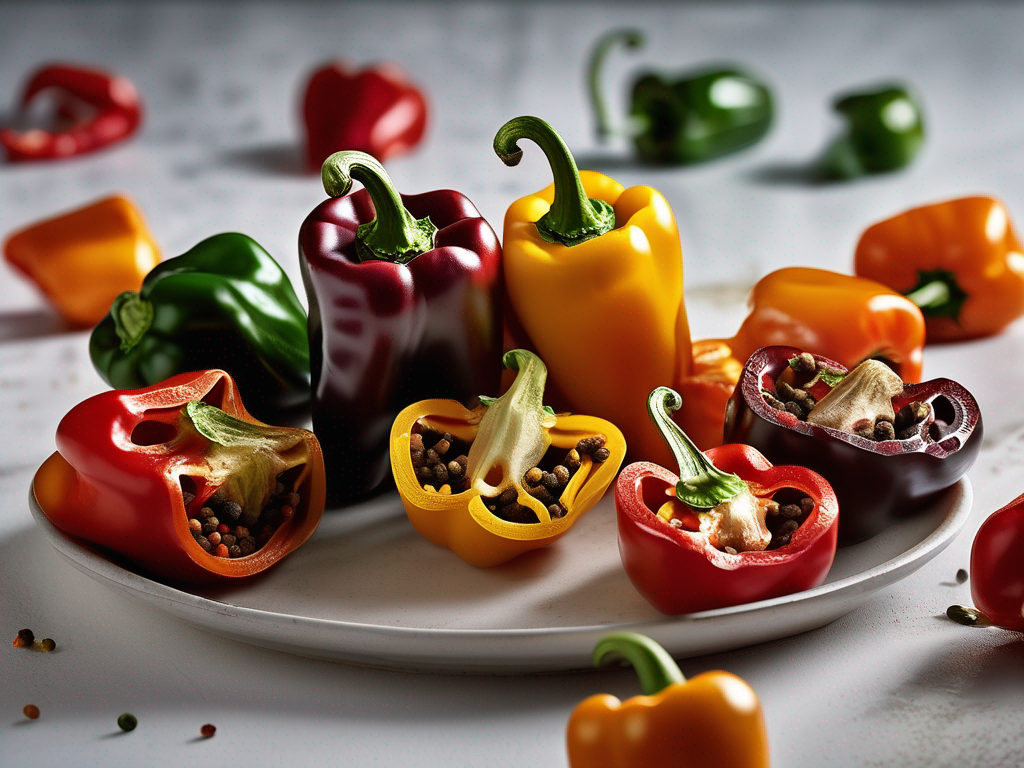
Is Your Pepper Still Safe to Eat? A Guide to Identifying Spoiled Pepper
Get Your Free Food Safety Cheat Sheet
30 most common foods with instant answers. Print it and stick it on your fridge—completely free!
Is Your Pepper Still Safe to Eat? A Guide to Identifying Spoiled Pepper
Pepper is a versatile spice that adds flavor and depth to a wide range of dishes. Whether you prefer black pepper, white pepper, or colorful peppercorns, it's essential to ensure that your pepper is still safe to use. In this guide, we'll explore how to tell if your pepper has gone bad and is no longer safe to eat. (Pepper)
Understanding Pepper Shelf Life
Pepper, when stored properly, can last for a long time. The shelf life of pepper depends on several factors, including how it is stored and the type of pepper. Here are some general guidelines for the shelf life of different types of pepper:
Whole Peppercorns
- Whole peppercorns can last up to 3-4 years if stored in a cool, dark place.
- Ground peppercorns have a shorter shelf life of about 2-3 years.
Ground Pepper
- Ground pepper loses its potency and flavor more quickly than whole peppercorns. It is best used within 6 months to a year for the best flavor.
Peppercorn Blends
- Peppercorn blends, such as mixed peppercorns or specialty blends, have a similar shelf life to whole peppercorns.
Signs Your Pepper Has Gone Bad
Pepper, like any spice, can go bad over time. Here are some common signs that your pepper may be spoiled and no longer safe to eat:
Visual Signs
- Discoloration: If you notice any mold, dark spots, or discoloration on the pepper, it is a clear sign that it has gone bad.
- Clumping: Clumping or caking of ground pepper is a sign of moisture exposure, which can lead to spoilage.
- Unusual Texture: If the pepper feels soft, sticky, or gritty, it may have absorbed moisture and gone bad.
Aromatic Signs
- Loss of Aroma: Fresh pepper should have a strong, pungent aroma. If your pepper smells musty, stale, or off, it may be spoiled.
Taste
- Bland Flavor: Spoiled pepper will have a dull, bland flavor compared to fresh pepper.
Tips for Storing Pepper Properly
Proper storage is key to extending the shelf life of your pepper and ensuring it stays fresh and flavorful. Here are some tips for storing pepper properly:
Storage Containers
- Store pepper in airtight containers to prevent moisture and air exposure.
- Opt for dark, opaque containers to protect the pepper from light exposure.
Storage Conditions
- Keep pepper in a cool, dry place away from heat and sunlight.
- Avoid storing pepper near heat sources like the stove or oven.
Avoiding Contamination
- Use clean, dry utensils when handling pepper to prevent contamination.
- Keep pepper away from moisture sources to prevent mold growth.
Conclusion
In conclusion, pepper is a pantry staple that can add a kick to your culinary creations. By understanding the signs of spoiled pepper and following proper storage guidelines, you can ensure that your pepper stays fresh and safe to use. Remember to check for visual signs of spoilage, pay attention to the aroma and flavor, and store your pepper in a cool, dry place. By taking these simple steps, you can enjoy the full flavor of your pepper for longer periods. Stay safe and enjoy your culinary adventures with fresh, flavorful pepper! (Pepper)
Authoritative Food Safety References
These agencies and university labs inform every tip and health precaution we publish.
USDA FoodKeeper – Cold Storage Guidelines
Official refrigerator, freezer, and pantry timelines maintained by the U.S. Department of Agriculture.
Visit USDA FoodKeeperFDA Produce Safety Rule & Grower Guidance
Field-to-fridge handling practices that prevent contamination of fruits, vegetables, and leafy greens.
Visit FDA Produce SafetyCDC Foodborne Illness Prevention Hub
Surveillance-backed guidance on pathogens, symptoms, and steps to reduce foodborne illness risk.
Visit CDC Food SafetyUC Davis Postharvest Technology Center
University research detailing optimal storage atmospheres for produce after harvest.
Visit UC Davis PostharvestPenn State Extension – Home Food Preservation & Safety
Peer-reviewed extension bulletins on safe canning, chilling, and reheating practices.
Visit Penn State ExtensionGet Your Free Food Safety Cheat Sheet
30 most common foods with instant answers. Print it and stick it on your fridge—completely free! Want more? Upgrade to the complete guide with 70+ foods.
Scan your food directly and get instant safety info using our AI-powered camera feature.